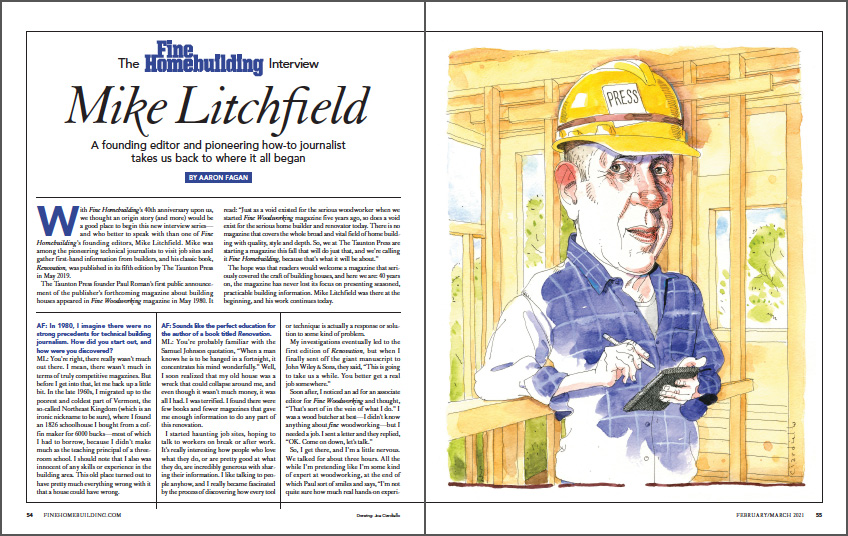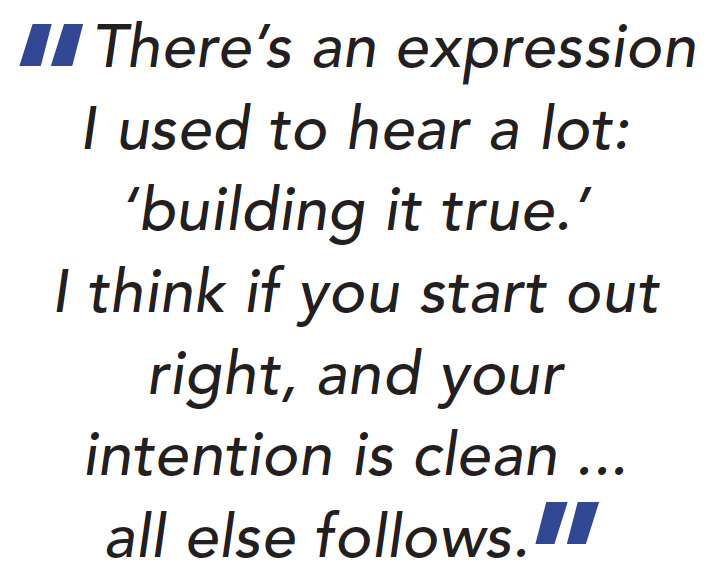The Fine Homebuilding Interview: Mike Litchfield
A founding editor of our magazine and a pioneering how-to journalist takes us back to where it all began.

Synopsis: In the first installment of the Fine Homebuilding interview series, Aaron Fagan interviews Mike Litchfield, the first editor at Fine Homebuilding magazine. Mike describes his background, the impetus for starting the publication, the growth of the home-building community, and what makes Fine Homebuilding special.
With Fine Homebuilding’s 40th anniversary upon us, we thought an origin story (and more) would be a good place to begin this new interview series— and who better to speak with than one of Fine Homebuilding’s founding editors, Mike Litchfield. Mike was among the pioneering technical journalists to visit job sites and gather first-hand information from builders, and his classic book, Renovation, was published in its fifth edition by The Taunton Press in May 2019.
The Taunton Press founder Paul Roman’s first public announcement of the publisher’s forthcoming magazine about building houses appeared in Fine Woodworking magazine in May 1980. It read: “Just as a void existed for the serious woodworker when we started Fine Woodworking magazine five years ago, so does a void exist for the serious home builder and renovator today. There is no magazine that covers the whole broad and vital field of home building with quality, style and depth. So, we at The Taunton Press are starting a magazine this fall that will do just that, and we’re calling it Fine Homebuilding, because that’s what it will be about.”
The hope was that readers would welcome a magazine that seriously covered the craft of building houses, and here we are: 40 years on, the magazine has never lost its focus on presenting seasoned, practicable building information. Mike Litchfield was there at the beginning, and his work continues today.
AF: In 1980, I imagine there were no strong precedents for technical building journalism. How did you start out, and how were you discovered?
ML: You’re right, there really wasn’t much out there. I mean, there wasn’t much in terms of truly competitive magazines. But before I get into that, let me back up a little bit. In the late 1960s, I migrated up to the poorest and coldest part of Vermont, the so-called Northeast Kingdom (which is an ironic nickname to be sure), where I found an 1826 schoolhouse I bought from a coffin maker for 6000 bucks—most of which I had to borrow, because I didn’t make much as the teaching principal of a three-room school. I should note that I also was innocent of any skills or experience in the building area. This old place turned out to have pretty much everything wrong with it that a house could have wrong.
AF: Sounds like the perfect education for the author of a book titled Renovation.
ML: You’re probably familiar with the Samuel Johnson quotation, “When a man knows he is to be hanged in a fortnight, it concentrates his mind wonderfully.” Well, I soon realized that my old house was a wreck that could collapse around me, and even though it wasn’t much money, it was all I had. I was terrified. I found there were few books and fewer magazines that gave me enough information to do any part of this renovation.
I started haunting job sites, hoping to talk to workers on break or after work. It’s really interesting how people who love what they do, or are pretty good at what they do, are incredibly generous with sharing their information. I like talking to people anyhow, and I really became fascinated by the process of discovering how every tool or technique is actually a response or solution to some kind of problem.
My investigations eventually led to the first edition of Renovation, but when I finally sent off the giant manuscript to John Wiley & Sons, they said, “This is going to take us a while. You better get a real job somewhere.”
Soon after, I noticed an ad for an associate editor for Fine Woodworking and thought, “That’s sort of in the vein of what I do.” I was a wood butcher at best—I didn’t know anything about fine woodworking—but I needed a job. I sent a letter and they replied, “OK. Come on down, let’s talk.”…

From Fine Homebuilding #297
To read the entire article, please click the View PDF button below.


























